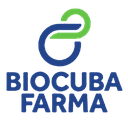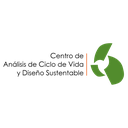Executive Secretary

VIII International Symposium on Chemistry and Pharmaceutical Sciences
SIPN
4th International Symposium "Chemistry of natural products”
Abstract
Currently, the deterioration of the ozone layer has resulted in an increase in the levels of UV radiation that affect the earth's surface and with it the harmful effects on human health, including skin cancer. Plants, with their obligatory exposure to sunlight, are sources of a wide range of secondary metabolites capable of protecting them from ultraviolet light. In the specialized international literature, numerous plant species have been evaluated as sources of photoprotective agents that exert their effect through various modes of action. Taking into account the above, in this paper we present the results obtained in the identification of flavonoids and proanthocyanidins by UPLC/ESI/IT/MSn of ethyl acetate extract from the hydroalcoholic extract of the bark of Serjania subdentata Juss. ex Radlk, a plant that is part of the ongoing national project, entitled "Natural products as a source of agents useful in chemoprevention and chemo treatment of UV light-induced conditions". Both hydroalcoholic extract and ethyl acetate extract showed no DNA damage, however, if a UV light absorption effect was observed, which could correspond to a high photoprotective effect. The identification of the compounds was carried out through the joint use of an ion trap analyzer and the collision activation of the positive pseudoions separately. It was identified for the first time in the plant: quercetin, kamferol, luteolin and 4 proanthocyanidins of type A, whose structures are presented in the exhibition.
Resumen
Actualmente, el deterioro de la capa de ozono ha traído como consecuencia un incremento en los niveles de radiaciones UV que inciden sobre la superficie terrestre y con ello los efectos nocivos sobre la salud humana, incluyendo el cáncer de piel. Las plantas, con su obligada exposición a luz solar, son fuentes de una variada gama de metabolitos secundarios capaces de protegerlas ante la luz ultravioleta. En la literatura internacional especializada, numerosas especies vegetales han sido evaluadas como fuentes de agentes fotoprotectores que ejercen su efecto mediante diversos modos de acción. Teniendo en cuenta lo antes expuesto, en este trabajo presentamos los resultados obtenidos en la identificación de flavonoides y proantocianidinas mediante UPLC/ESI/IT/MSn del extracto de acetato de etilo proveniente del extracto hidroalcohólico de la corteza de Serjania subdentata Juss. ex Radlk, planta que forma parte del proyecto nacional en curso, titulado “Productos naturales como fuente de agentes útiles en la quimioprevención y quimiotratamiento de afecciones inducidas por luz UV”. Tanto el extracto hidroalcohólico como el de acetato de etilo no mostraron daño al DNA, sin embargo, si se observó un efecto de absorción de la luz UV, lo que podría corresponderse con un efecto fotoprotector alto. La identificación de los compuestos se realizó mediante el empleo conjunto de un analizador trampa de iones y la activación colisional de los pseudoiones positivos por separados. Se identificó por primera vez en la planta: quercetina, kamferol, luteolina y 4 proantocianidinas del tipo A, cuyas estructuras se presentan en la exposición.
About The Speaker

Iraida Spengler Salabarria

Discussion




